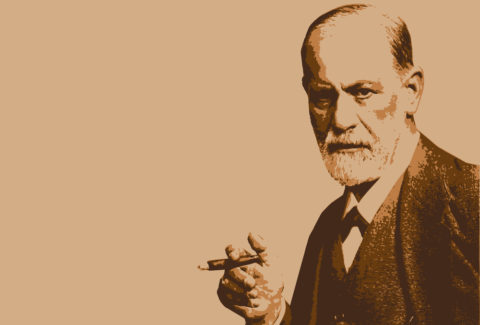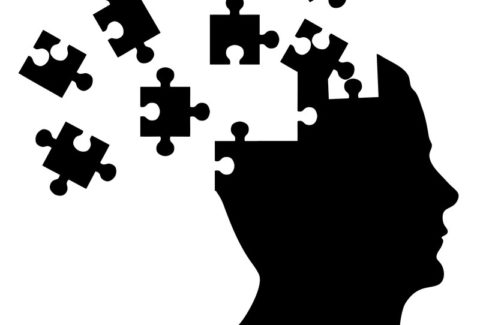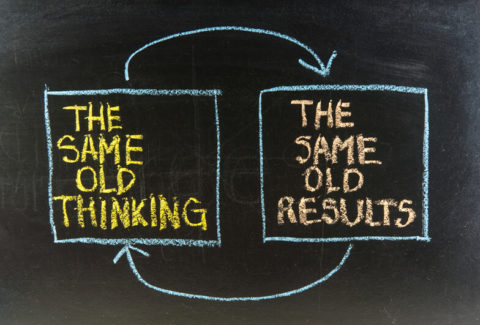Wearing Your Psychodynamically Informed Hat: Elaboration on the Concept of Defense Mechanism

Wearing Your Psychodynamically Informed Hat: Elaboration on the Concept of Defense Mechanism
 “His relationships are all distant, online, and one time, one of his online girlfriends visited him, but then broke up with him soon after; and he was devastated. Ever since, he has been decompensating.” Janet narrated this to Evelyn, her clinical supervisor and was alluding to Joel, who had stopped his medications, relapsed to substance use, became suicidal, and had displayed aggressive behavior.
“His relationships are all distant, online, and one time, one of his online girlfriends visited him, but then broke up with him soon after; and he was devastated. Ever since, he has been decompensating.” Janet narrated this to Evelyn, her clinical supervisor and was alluding to Joel, who had stopped his medications, relapsed to substance use, became suicidal, and had displayed aggressive behavior.
“Let’s take care of the urgent issues, problem solve, and then take some time to better understand Joel,” responded Evelyn, who helped Janet come up with the next steps and addressed the urgent issues. Evelyn then added, “Now, let us talk about the nature of Joel’s situation.” And so, they did. In a previous article, entitled, Wearing Your Psychodynamically Informed Hat: Introducing the Concept of Defense Mechanism, I used the discussion held by Evelyn and Janet about Joel to introduce defense mechanisms. In this current article, I am going to elaborate on this important concept.
In the previous article, referenced above, I defined defense mechanism as the unconscious strategies we use to  protect ourselves from the anxiety that come from painful experiences, which may be associated with some unwanted thoughts and feelings. I also provided an oversimplified way of categorizing defense mechanisms—mature and immature. Now, let us proceed with some elaboration.
protect ourselves from the anxiety that come from painful experiences, which may be associated with some unwanted thoughts and feelings. I also provided an oversimplified way of categorizing defense mechanisms—mature and immature. Now, let us proceed with some elaboration.
I provided a simplified way of categorizing defense mechanisms, because there is no single best way to classify them. Nonetheless, seeing them through two broad categories will help you better understand and reconcile all the other types of classifications. For now, let us agree to this: Mature defense mechanisms are those that take place in individuals who are “emotionally healthy,” though the source of the defense mechanism, per se, may not be as healthy. However, the individual has been able to adapt and use healthy strategies to cope with the anxiety associated with the repression of the painful experiences or thoughts. On the other end, immature defense mechanisms take place in individuals who are “less emotionally healthy.” These mechanisms still serve to protect those individuals but not without pain either inflicted on themselves or others. The immature defense mechanisms can be further subcategorized based on level of immaturity and on the orientation of the author of the classification.
But for now let us start discussing the “mature defense mechanisms.”
 “Daddy, you are so kind, and you have a good heart.” Seven-year-old Cindy articulated these words to her father, Dan, after she had witnessed him placing a $1 bill into the basket of a homeless man, with an infected, open wound, sitting on the street, outside the subway station. Dan, an infectious disease doctor, saw the man and thought to himself, “This man should be in the hospital, receiving antibiotics, or he may end up losing this leg. Should I even tell him, and if I do, what will then happen?” There were so many thoughts going through Dan’s mind, all in a matter of milliseconds; several feelings also accompanied them. Anxious and unsure about the next steps, Dan says to himself, “Do I tell him what to do; if I do, how will he react; if he is willing to seek medical help, how will I help with arrangements; are there any other ways for me to help him?” Dan was also experiencing some form of helplessness, paralyzed in his thought process, and with that also came a sense of guilt, “I am a doctor, for God’s sake, I should just tell this guy he is going to lose this leg, unless he does something about it.” With so many thoughts, so many feelings, so much exercise going on in Dan’s head, all in a matter of milliseconds, he had to figure out how to cope with them. He reached for his wallet, took out a $1 bill, placed it in the old man’s basket and walked away, feeling good about himself, which, in turn, got reinforced by his daughter’s feedback. Dan’s way of coping with the anxiety that almost paralyzed him, though lasting only a fraction of a seconds, is known as altruism, and it is an example of a mature defense mechanism.
“Daddy, you are so kind, and you have a good heart.” Seven-year-old Cindy articulated these words to her father, Dan, after she had witnessed him placing a $1 bill into the basket of a homeless man, with an infected, open wound, sitting on the street, outside the subway station. Dan, an infectious disease doctor, saw the man and thought to himself, “This man should be in the hospital, receiving antibiotics, or he may end up losing this leg. Should I even tell him, and if I do, what will then happen?” There were so many thoughts going through Dan’s mind, all in a matter of milliseconds; several feelings also accompanied them. Anxious and unsure about the next steps, Dan says to himself, “Do I tell him what to do; if I do, how will he react; if he is willing to seek medical help, how will I help with arrangements; are there any other ways for me to help him?” Dan was also experiencing some form of helplessness, paralyzed in his thought process, and with that also came a sense of guilt, “I am a doctor, for God’s sake, I should just tell this guy he is going to lose this leg, unless he does something about it.” With so many thoughts, so many feelings, so much exercise going on in Dan’s head, all in a matter of milliseconds, he had to figure out how to cope with them. He reached for his wallet, took out a $1 bill, placed it in the old man’s basket and walked away, feeling good about himself, which, in turn, got reinforced by his daughter’s feedback. Dan’s way of coping with the anxiety that almost paralyzed him, though lasting only a fraction of a seconds, is known as altruism, and it is an example of a mature defense mechanism.
As you can see, Dan was barely aware of what exactly led him to give the homeless man a $1 bill. The process went through his mind so quickly. He may not have even been aware of the anxiety he was experiencing, or that the good feeling he experienced was not really from only giving away the dollar bill, but rather, it was from his unconscious resolution of his anxiety for the moment. After all, while on the train, and before exiting, Dan had seen other folks asking for money, and it was easy for him to ignore them without feeling any sense of guilt, “one way or the other”. However, this man, with a large, open wound caught Dan’s attention. He had to do something about it; he had to cope with it, and he did.
In addition to Altruism, here are fifteen more examples of mature defense mechanisms:
Sublimation Anticipation Humor Suppression
Acceptance Courage Identification Humility Tolerance
Respect Patience Moderation Gratitude
Forgiveness Mindfulness
Which one of the above does any of your patients and clients possess, and which ones can you help them foster as part of their coping skills?
References:
-
Paulhus, D.L., Fridhandler B., and Hayes S. (1997). Psychological defense: Contemporary theory and research. In Briggs, Stephen; Hogan, Robert Goode; Johnson, John W. (1997). Handbook of personality psychology. Boston: Academic Press. pp. 543–579.
-
Cramer, P. (1991). The Development of Defense Mechanisms: Theory, Research, and Assessment. New York, Springer-Verlag.
-
Hock, Roger R. “Reading 30: You’re Getting Defensive Again!” Forty Studies That Changed Psychology. 7th ed. Upper Saddle River: Pearson Education, 2013. 233–38
-
Plutchik, R., Kellerman, H., & Conte, H. R. (1979). A structural theory of ego defences and emotions. In C. E. Izard (Ed.), Emotions in personality and psychopathology (pp. 229–-257). New York: Plenum Press.
-
American Psychiatric Association. (1994). Diagnostic and statistical manual of mental disorders (4th ed.). Washington, DC: Author.








